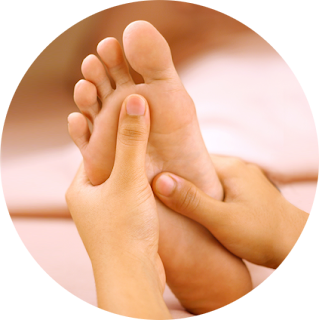7 Common Foot Problems That Need Podiatry Services
Most of us tend to take for granted the vital role that our
feet play in carrying and supporting our entire body weight; as with every step
the feet are compressed and pressured. If the amount of pressure and friction
increases over a period the body reacts by adding extra layers of skin for the
protection of our feet. This thick hard skin is often found in areas that
endure the most significant pressure forces & subsequent friction like the
ball, heel & toes of the foot.
This article discusses the common foot problems faced by many of us and the importance of proper foot
care indeed maintenance of the feet. The harsh winter or even summer weather,
combined with walking or running or even just static standing causes many foot
conditions that make us call out to a foot specialist immediately.
Common Foot Problems
that need Podiatry Services are:
Athlete’s foot
The Athletes Foot is caused by a fungus that grows in a
warm, dark, and moist environment usually, like the areas between the toes or
on the bottoms of the feet. Athlete’s foot inflames the skin causing a white,
scaly rash that has a red base. The typical symptoms of an athlete’s foot
fungus are itching, burning, peeling, and sometimes a slight odor. The
infection from Athlete’s foot is said to migrate to other body parts as well,
which is why it is imperative to visit a foot
doctor as soon as this is diagnosed.
Blisters
The sole cause of blisters is the fitting of the shoe that
we wear. If your shoes fit well, you won't have blisters. Blisters are recognized
by soft pockets of raised skin that get filled with clear fluid. Blisters are
usually cause a lot of pain and can make walking extremely difficult. It’s
important to keep the blister area clean and use a sterilized needle to open
the part of the blister.
Corns and Calluses
Corns and calluses form after repeatedly being rubbed
against a bony area of the foot or a shoe. Corns appear on the top and sides of
the toes as well as between the toes. Calluses form under the heels or balls,
on the bottom of the foot, and on the sides of toes. They are compressed
patches of dead skin cells that are usually hard and painful. To relieve the
pain, people typically try placing moleskin or padding around corns and
calluses. Trying to remove corns and calluses yourself is a big no-no. People
must visit a podiatry clinic instead for care.
Gout
Gout is a type of arthritis caused by a build-up of uric
acid in joint tissues and joint fluid, which happens when the body is unable to
keep uric acid levels in check. To prevent a gout attack, one must identify
triggers, including high-purine foods, red meat, seafood, and alcohol in their
diet. To treat gout, applying ice, keeping hydrated, and staying in bed helps
too.
The right way to clip toenails — straight across — is
fundamental to foot health. If you don’t cut them correctly, the corners or
sides of the nail can dig into the skin and become ingrown. Ingrown toenails are sometimes caused due to shoe pressure, a
fungus infection, and even poor foot structure. While cutting your toenails,
use larger toenail clippers and avoid cutting nails too short, as it can also
cause ingrown toenails or infection.
Toenail Fungus
Toenail fungus gives nails an unattractive and deformed
appearance. It also alters the nail’s color and spread to other nails, even
spreads to fingernails sometimes. If you walk through wet areas where people
tend to go barefoot, such as locker rooms and swimming pools then avoiding
toenail fungus is difficult. People with chronic ailments, such as diabetes or
immune deficiency diseases like HIV, are especially vulnerable and must keep
their shoes on at such places.
Ankle Sprain
Ankle sprain is caused due to twist in ankle bone. When they
receive too much force, the ligaments surrounding the outside of the bones
suffer from over-stretching or tearing, resulting in acute pain in the ankle.
There are different levels of severity when it comes to ankle sprains. The
ankle treatment must be taken seriously at all times because if the injury is
not adequately diagnosed and treated, it can cause permanent, lasting ankle
trouble.


Comments
Post a Comment